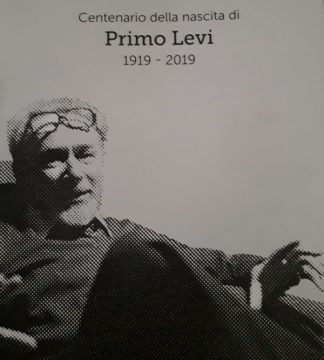Noa Gutow-Ellis in mjhnyc:
It happened, therefore it can happen again: this is the core of what we have to say. It can happen, and it can happen everywhere. (Primo Levi, 1986)
 These words anchor the exhibition Auschwitz. Not long ago. Not far away. The quote above is the first line visitors read when they enter the gallery. Levi establishes a moral framework, an emotional gravity that drives the visitor experience. In my own time within the exhibition, it felt as though this line from Levi echoed throughout the entirety of my visit. Born in 1919—one hundred years ago—in Turin, Italy, Levi worked as a chemist before his arrest and deportation to Auschwitz in 1943. He survived Auschwitz and, in 1947, published an account of his experiences. Translated into nearly 40 languages, If This Is a Man (also known as Survival in Auschwitz) endures today.
These words anchor the exhibition Auschwitz. Not long ago. Not far away. The quote above is the first line visitors read when they enter the gallery. Levi establishes a moral framework, an emotional gravity that drives the visitor experience. In my own time within the exhibition, it felt as though this line from Levi echoed throughout the entirety of my visit. Born in 1919—one hundred years ago—in Turin, Italy, Levi worked as a chemist before his arrest and deportation to Auschwitz in 1943. He survived Auschwitz and, in 1947, published an account of his experiences. Translated into nearly 40 languages, If This Is a Man (also known as Survival in Auschwitz) endures today.
In mid-June, Centro Primo Levi in New York along with the Italian Cultural Instituteand the New York Public Library hosted an eight-hour, full-length recitation of Levi’s If This Is A Man in twenty-five languages. Sitting and taking in the English words on a screen while listening to impassioned, compelling readers recite Levi’s lines in languages from Albanian to French, from Russian to Korean, the resonance of Levi’s words, messages, and his breathtaking account of life in Auschwitz was clear to me – even as I did not understand most of the languages I was listening to. As Alvin H. Rosenfeld, renowned scholar of Jewish literature and Holocaust studies, so aptly wrote, “Levi was able to evoke [Auschwitz’s] madness, cruelty, and near-incomprehensibility with compelling clarity.” It is Levi’s ability to make sense of the senseless, to translate the unthinkable that serves as an anchor for me – and anyone, really – in seeking to understand Auschwitz. Levi did all of this in 1947 when his volume was published; the event’s readers brought this to life again in 2019; and the thousands upon thousands of visitors to Auschwitz. Not long ago. Not far away. are anchored by his words each time one of them steps foot into the exhibition.
More here.
